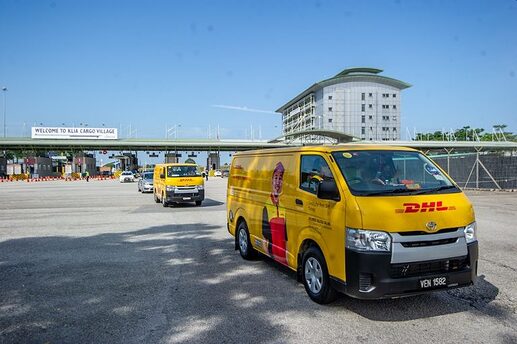If you’ve been following news around the arrival of the COVID-19 vaccine in Malaysia, you may have noticed that the high-tech vaccines for one of the most devastating viruses to hit the world is being shipped by the same vehicles you receive your Lazada or Shopee purchases in. The question is: why? Surely there has to be some more high-tech transportation solution for such an important (and expensive) package.
Well, the answer here is yes, but also no.
First thing’s first, there are a couple of things you should know about the vaccine that just arrived in Malaysia. As you may know, Malaysia has procured several different vaccines to be administered, and the ones that have just arrived come from Pfizer. These are the Pfizer-BioNTech vaccine and they’re very sensitive to temperature.
Because of that, it would make sense to think that there’d be some specialised vehicles needed to transport these vaccines, and not just your off-the-shelf delivery van. But, in actuality, the delivery vehicle doesn’t matter as much as the vessel or container that houses the Pfizer vaccine.
According to their website, the Pfizer has developed special temperature controlled thermal shippers which utilise dry ice to maintain a temperature of around -70°C for up to 10 days unopened. This allows the vaccine to be shipped directly to points-of-use within the US by either land or air transport. And you can see what these thermal shippers look like from these vaccine unboxing videos.
As you can see, from the outside these look a lot like regular shipping boxes, which means that there isn’t really a need for specialised refrigerated lorries or vehicles to transport them. Once the vaccines arrive at the point-of-use, Pfizer states that there are three ways to store the doses.
3 ways to store the doses
- First is via ultra-low temperature freezers which are commercially available, and can also extend shelf life for up to six months.
- The vaccine can also be stored in refrigeration units commonly available in hospitals at 2-8°C, but this will only allow the vaccines to be stored for up to five days.
- Alternatively, the thermal shippers themselves can be used as temporary storage units by refilling with dry ice every five days. This method will allow for up to 30 days of storage.
If you think about it, it definitely makes sense to have storage and shipping solutions that don’t require specialised vehicles. This not only allows countries to rely on existing delivery operators (DHL, FedEx, etc.) with their extensive networks, but it also makes it easier for the vaccines to be transported to points of use that are in more remote locations.
In Malaysia, the vaccine arrived by air in KLIA and Penang, as well as Johor by land yesterday.
The Special Committee for ensuring access to COVID-19 Vaccine Supply (JKJAV) has also announced that the immunisation plan will begin earlier, starting on Wednesday, the 24th of February 2021. Prime Minister Muhyiddin Yassin will be the first to receive the jab and he will be joined by Health Director-General Dr Noor Hisham.
Source: SoyaCincau
